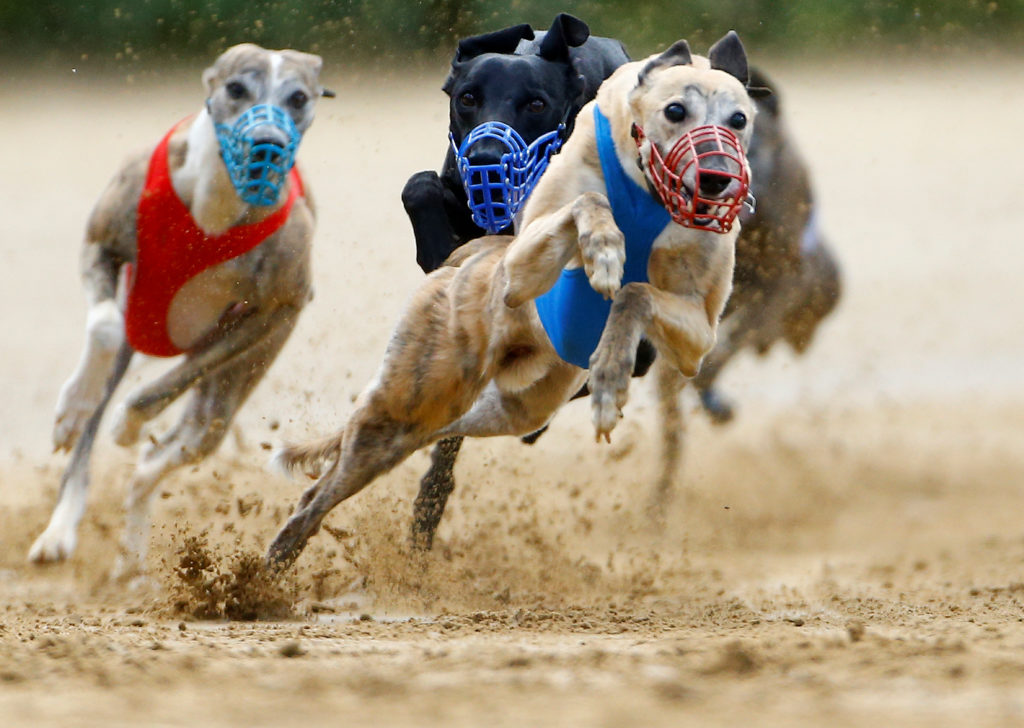
Dogs compete during an annual international dog race in Gelsenkirchen, Germany, June 9, 2019. REUTERS/Thilo Schmuelgen
Greyhound racing has a rich and storied history that spans several centuries having changed from being a game of the affluent to becoming one of the loved sports by millions. Thus, knowing the beginning and development of the greyhound race for Lotus365 fans is a chance to show this admiration. This article, thus, gives an insight into the amazing past times and changes in greyhound racing.
Early Beginnings
Ancient civilizations are credited with popularizing greyhound racing. The earliest breeds of dogs that resembled greyhounds can be traced back to ancient Egypt, Greece and Rome where they were respected for their swiftness as well as hunting prowess . Thus, these animals have been depicted in art and literature, representing nobility in addition to quickness.
During the medieval Europe era, they were used primarily for hunting games such as hares or deer. A sport known as coursing which was also about watching greyhounds run after small prey other than sniffing around was common among aristocrats because it required speed mainly. They were later transformed into organized races held many years hence.
The Birth of Modern Greyhound Racing
Modern greyhound racing started in the early 20th century. However; things took a turn in 1912 after Owen Patrick Smith came up with mechanical lure which became instrumental in facilitating closed oval tracks where races could be carried out making it easily accessible for people who wanted to engage but not participate Moore (2016). It opened its first track at Emeryville California in 1919 and therefore marks the true commencement of modern-day dog racing.
In the United States, this sport rapidly gained momentum before spreading into UK shores. It happened at Belle Vue Stadium Manchester when the first ever professional competition occurred on July 24th 1926 Moore (2016). Such tournaments attracted significant crowds hence inspiring erection of more stadia all over England.
Expansion and Golden Era
The mid-20th century is often regarded as the golden era of greyhound racing. This led to the construction of new tracks in other countries like Australia, Ireland, United States and the United Kingdom. Consequently, gambling on dog races turned into a huge attraction contributing to its popularity worldwide.
In the UK, Greyhound Racing Association (GRA) was instrumental in developing the sport and setting standards for race and track operations. Therefore, it is during this time that the English Greyhound Derby and Irish Greyhound Derby were created, becoming one of its kind in greyhound racing competitions.
Technological and Regulatory Changes
The second half of the 20th century saw several technological advancements and regulatory changes that influenced future improvement of dog races. The introduction of photo finish cameras and electronic timer systems added a sense of fairness in determining race outcomes. At the same time developments in terms of veterinary medicine as well as feeding also improved dogs’ performance including welfare during matches.
Additionally there are regulatory bodies that superintend over these games ensuring both safety for animals while running as well as honesty among players involved in competition events . For instance, National Greyhound Racing Club (NGRC) was founded for monitoring greyhounds within UK boundaries by enforcing guiding principles governing animal welfare standards related to racing ethics with specific emphasis on betting practices .
Contemporary Greyhound Racing
For instance, today’s greyhound racing still remains a popular sport even though it is confronted with challenges such as dwindling track crowds and increased scrutiny over animal welfare. Numerous countries have imposed tougher rules to guarantee proper treatment of racing dogs in their jurisdiction. Notably, the efforts to re-home retired dogs from racing careers into family houses has also gained credence.
Moreover, technological advancements like live streaming of races and online betting platforms such as Lotus365 Sports Betting have contributed significantly towards sustaining interest in the sport (SocialPilot) (BloggingTips). Such developments enable fans to access race feeds and place bets from any location thus making greyhound racing enjoyable in the digital age.
Conclusion
Greyhound racing history is a proof of its ongoing popularity and consistent efforts to modernize it. The development of greyhound racing can be traced back to ancient days up until now when it has improved greatly; reflecting time changes while maintaining its original thrill with it. Indeed, this deepens their passion for the game among those who bet on or follow it.





